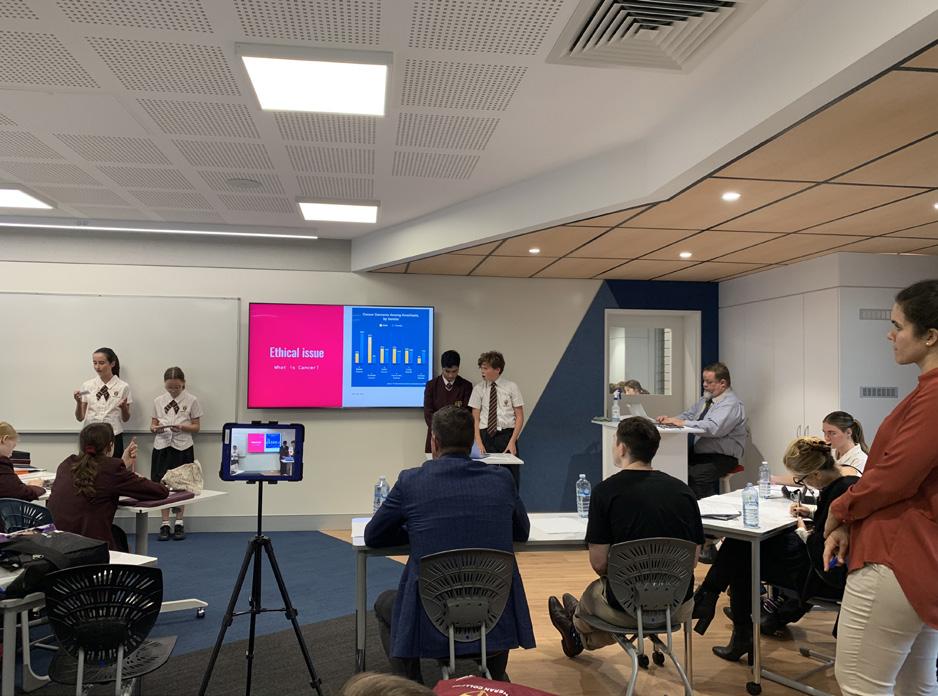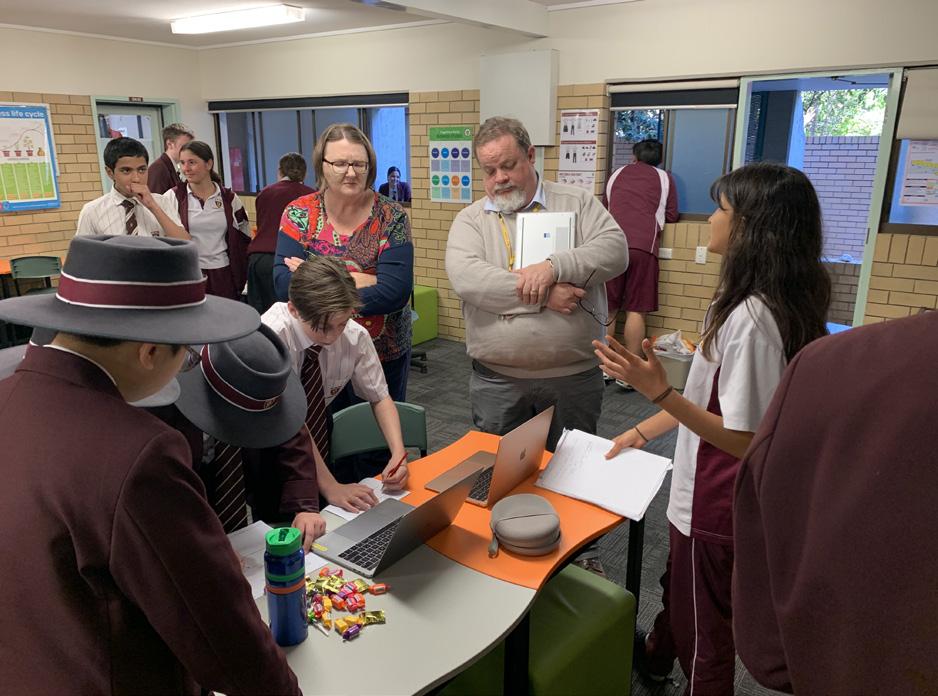
4 minute read
Head of College
INNOVATION AT ST PETERS
TIM KOTZUR
head of college
Innovation is a key Strategic Pillar of the College’s new Strategic Intent 'Plus Ultra 2025'. The intent of this Pillar is to ‘foster a culture of Innovation that aligns with our Mission’.
Innovation is part of the DNA of St Peters. The decision to start a co-educational school in 1945 was, at the time, a bold, daring and innovative decision, and was the first of many innovative approaches and programs that have characterised a St Peters education. Computer Education, Middle Schooling, Human Relationship Education, Physical Education and Ironbark are all examples of innovations where St Peters led the State, and some cases the nation in terms of educational developments.
Innovation is part of St Peters DNA because of our identity of being a Lutheran institution. When we think of Martin Luther and the Reformation we tend to think that it was something that happened 500 years ago. But that is not necessarily accurate. Luther always intended for the Reformation to be something that was ongoing. St Peters is part of a tradition that sees itself as always in a process of becoming, that is ever reforming or semper reformanda, as it would be expressed in Latin. Practicing being semper reformanda keeps St Peters flexible and nimble. It allows us to be a responsive institution, where form follows function, and to be bold in editing out structures and programs that have become stagnant and no longer pulse with mission.
Innovation is critical to the future of St Peters. In order for St Peters to be sustainable and remain at the forefront of education and flourish we must continue to embrace innovation. Those organisations that don’t innovate, that rest on their laurels, go the way of the dinosaur – think Kodak, think Nokia.
As part of this Strategic Pillar, in the long term we seek to create an environment where an innovative mindset becomes part of our culture. In the short term, we look to build a climate that supports managed risk-taking with appropriate structures, leadership, and rewards, and encourage sharing lessons learned from failures.
There is another side to this Strategic Pillar of Innovation – the explicit teaching of it. One of our key Strategic Initiatives here is to ‘implement design thinking, innovation and enterprise skills and entrepreneurial learning within the curriculum’. The development of these skills and mindsets in our students is important because of the disruption we have seen, and will continue to see, in relation to the world of work. In order to thrive and flourish in today’s environment our students will require enterprise skills and entrepreneurial mindsets. We have already made good progress on this Strategic Initiative. In Year 10, instead of studying a traditional Business Studies course our students have the opportunity to take an Entrepreneur Class where, as a culmination of their learning, they get to pitch their ideas, products and prototypes to the community through market stalls at lunchtime. In Year 7, all our students undertake a unit known as ‘EthiCool’ where, in small groups, they have to develop a product or service that utilises technology in order to solve a health problem. As part of developing the product, the students have to develop a Marketing and Communications Plan in order to take it to market. To create an element of authenticity each group has to pitch their idea to an external panel ‘Shark Tank’ style.
More and more of our students are expressing a desire to become entrepreneurs upon graduation. They are also demonstrating a keen interest in social entrepreneurship—the practice of using entrepreneurial skills to solve social problems. We must respond to these calls by expanding our offerings in the field of entrepreneurship and social entrepreneurship. Entrepreneurship education isn't just about teaching our students how to make money or turn a profit. It's about empowering them to become agents of change and equipping them to solve problems; empathise with people who might not look like them; and pick themselves up after adversity. It is important to note that creativity and innovation has a social component and requires adaptability, leadership, teamwork, and interpersonal skills. Increasingly, today, the capacity to create and innovate is linked to the ability to connect with others and with a facility for communication and collaboration.
In pursuing this Strategic Intent the College is endeavouring to prepare our students for their future. To quote renowned author about human behaviour, Daniel Pink, ‘The future belongs to a very different kind of person with a very different kind of mind—creators and empathisers, pattern recognisers and meaning makers. These people …. will now reap society’s richest rewards and share its greatest joys’.
An outcome of our Strategic Intent 'Plus Ultra 2025' is that innovation should truly be a hallmark of St Peters and a St Peters education.

Pictured (clockwise from left): Year 7 'EthiCool' student presentations; 'EthiCool' panelists, teachers and Senior students; Year 10 Entrepreneur class lunchtime presentations; Students presenting to Mr Hurwood and Mrs Walker.



RYAN HARVIE McENERY
CHARTERED ACCOUNTANTS
Phone us: 07 3870 2622 Email us: admin@rhmc.com.au
Individual Returns, Tax and Financial Accounting, Auditors, and Business Valuations










